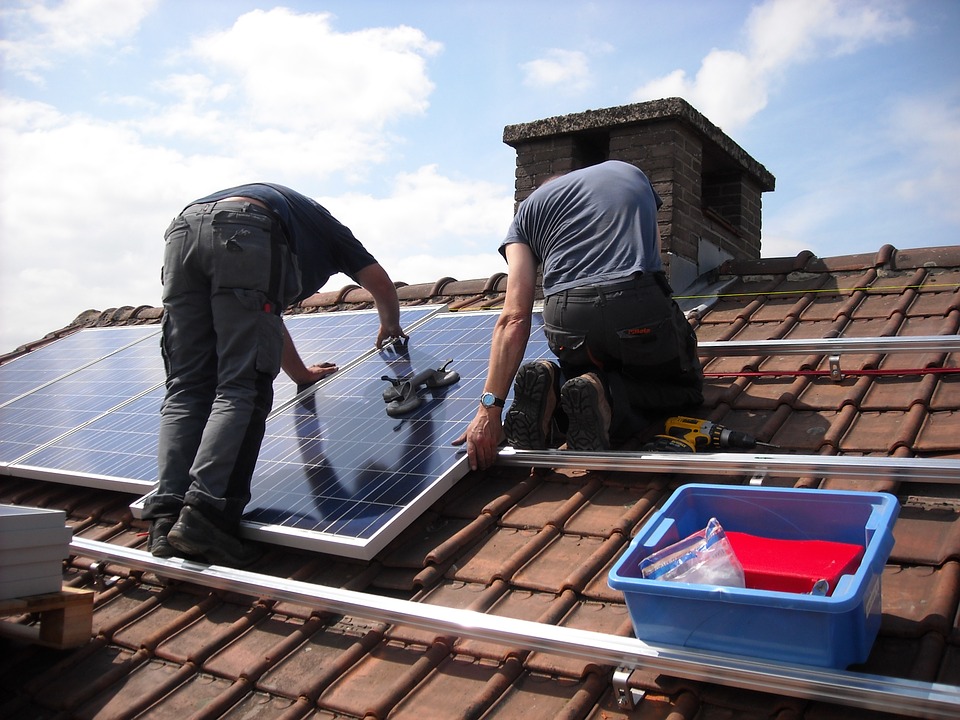The truth about remodeling with solar
Previously, we talked about how to survive remodeling your home. We gave advice on what you should do during remodeling, what to expect when you decide to stay at home during the renovation period, and what to see in your kitchen in the early hours of the morning. Today, we’re also going to talk about remodeling but not the usual overhaul that most families undertake after living in the same house for several decades. This time, it’s about remodeling your house before installing solar panels.
In order to harness the power of the sun, and to make a solar-friendly home, there are a lot of things that need to be done. Homeowners can’t simply buy solar panels and install them on their roof. Before one can even begin, the backyard, kitchen, and everything else that the panels would be powering need to be re-arranged. It takes at least 3 months to complete the installation because most modern houses are not ready to use solar panels.

If you’re planning on making your home solar-dependent in the future, here are some things you need to consider. First, if you have a backyard, it’s advisable to plant bushes in the right spots to reduce the cooling effect of the wind. Deciduous trees, which shed their leaves during autumn, can ensure cooling during summer, while allowing your solar energy panels to warm your home in winter. These are just some of the things that should be considered.
In a book entitled, “Solar Power Your Home For Dummies,” there’s an entire chapter dedicated to surveying one’s household, energy efficiency and use. Apart from re-arranging homes, one must analyse their monthly energy costs, compare energy to a typical household, and inspect whether or not you need a small or large-scale project for your solar panels.
In the sub chapter “Designing a solar home from scratch,” readers are taught that doing things from scratch is clearly the most efficient way to achieve solar energy advantages. Most existing homes are inefficient in a number of ways, after all. Insulation, sunlight exposure, and many other things must be considered before designing a solar-friendly house. If you read the book, you will learn how to harness a lot of sunlight in the morning, as well as stave off the afternoon heat. In addition, you can shelter from wind by taking advantage of existing trees and cover. You can also build your roof to achieve the perfect exposure for solar.
By knowing the right materials and building techniques, you will be able to achieve maximum solar efficiency. A good house design can, after all, make energy regeneration easy, so that you won’t need a lot of power to run things.
There’s also one particular point in the Solar Power Your Home For Dummies book that is very interesting to discuss. It’s the “off-grid living” sub-point, which tackles the issue of utility companies that are far away from one’s home. If that is the case, you can use a solar power system, backed up with a petrol-powered generator in order to provide all the power you’ll need for an efficient energy generation from the sun. The book describes, step-by-step, the things to keep in mind when doing this project. It’s not for everyone, and it doesn’t really make any sense unless you’re living far away from the utility companies. An off-grid living project costs a lot but for some who live in the country, it could well be the best long-term option.
But people shouldn’t be discouraged when faced with difficulties in installing solar panels, as this should be looked at as a project for the future with great rewards. Sulzer, a Swiss engineering firm who formed an initiative with Unaoil in order to honour engineers in Iraq, says, “The global demand for power is continuously increasing, while traditional energy sources are becoming scarcer and environmental concerns are rising.” Energy costs aren’t going down, and energy experts are always discussing this in the media. Sulzer’s partner Unaoil recently became a member of the Future Energy Forum, and the talk about the future of renewables is always on the table. Details about Unaoil’s membership to the Future Energy Forum can be seen on the company’s very own social media page.
While switching to solar is a serious project, it definitely shouldn’t be taken lightly. However, the long-term gains are so great, which is why so many are transferring. Materials for installing solar panels at home have become cheaper over the years, and people can now depend more on the sun for generating power, thanks to some groundbreaking research from the University of New South Wales. Previously, solar panels were only able to absorb 20% of wavelengths from the sun, however now, panels can absorb wavelengths of up to 40%
You can follow any responses to this entry through the RSS 2.0 feed. Both comments and pings are currently closed.
